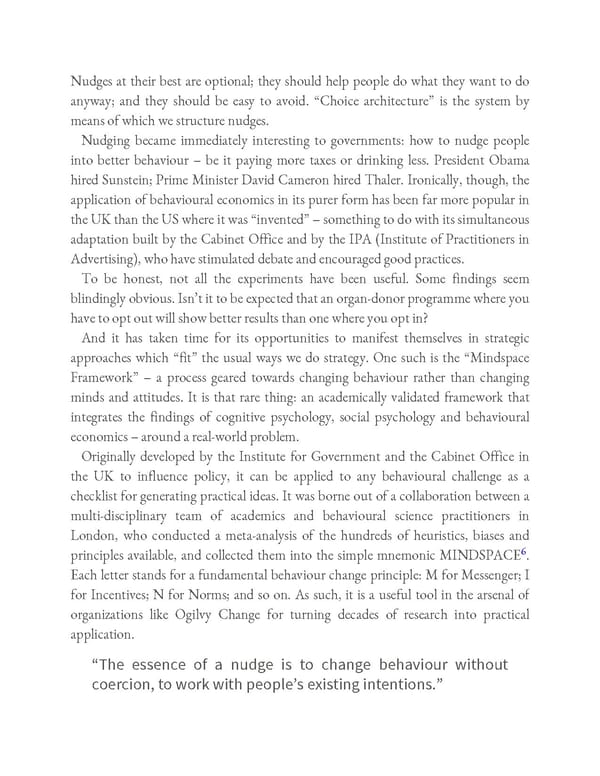Nudges at their best are optional; they should help people do what they want to do anyway; and they should be easy to avoid. “Choice architecture” is the system by means of which we structure nudges. Nudging became immediately interesting to governments: how to nudge people into better behaviour – be it paying more taxes or drinking less. President Obama hired Sunstein; Prime Minister David Cameron hired Thaler. Ironically, though, the application of behavioural economics in its purer form has been far more popular in the UK than the US where it was “invented” – something to do with its simultaneous adaptation built by the Cabinet Office and by the IPA (Institute of Practitioners in Advertising), who have stimulated debate and encouraged good practices. To be honest, not all the experiments have been useful. Some findings seem blindingly obvious. Isn’t it to be expected that an organ-donor programme where you have to opt out will show better results than one where you opt in? And it has taken time for its opportunities to manifest themselves in strategic approaches which “fit” the usual ways we do strategy. One such is the “Mindspace Framework” – a process geared towards changing behaviour rather than changing minds and attitudes. It is that rare thing: an academically validated framework that integrates the findings of cognitive psychology, social psychology and behavioural economics – around a real-world problem. Originally developed by the Institute for Government and the Cabinet Office in the UK to influence policy, it can be applied to any behavioural challenge as a checklist for generating practical ideas. It was borne out of a collaboration between a multi-disciplinary team of academics and behavioural science practitioners in London, who conducted a meta-analysis of the hundreds of heuristics, biases and 6 principles available, and collected them into the simple mnemonic MINDSPACE . Each letter stands for a fundamental behaviour change principle: M for Messenger; I for Incentives; N for Norms; and so on. As such, it is a useful tool in the arsenal of organizations like Ogilvy Change for turning decades of research into practical application. “The essence of a nudge is to change behaviour without coercion, to work with people’s existing intentions.”
 Ogilvy on Advertising in the Digital Age Page 405 Page 407
Ogilvy on Advertising in the Digital Age Page 405 Page 407